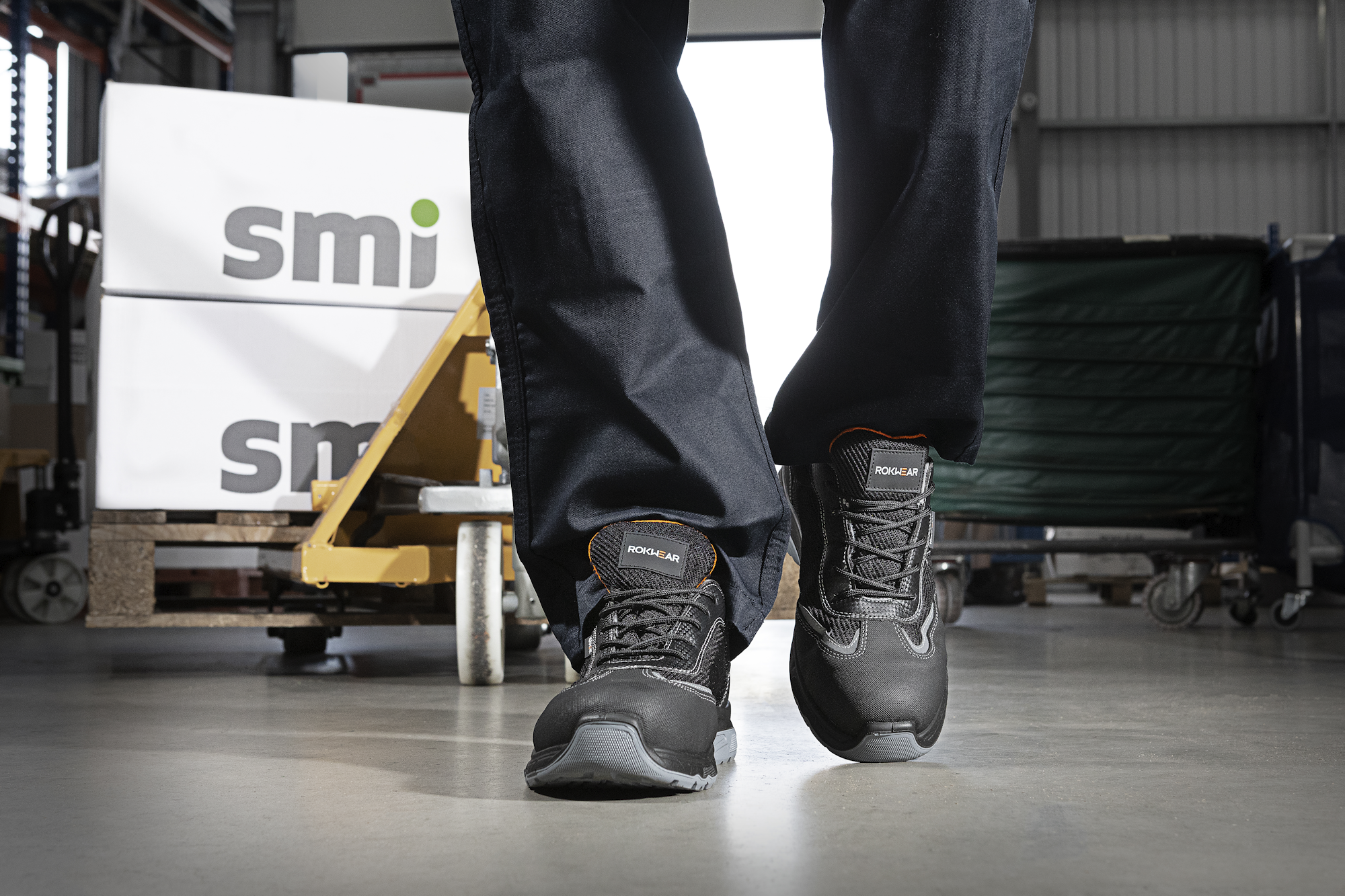
Insight
Your guide to understanding waterproof clothing ratings and standards
Your complete guide to the different waterproof clothing ratings and standards. Find the right waterproof workwear for your team.
7 minute read

The Office for National Statistics (ONS) reported that as of October 2021, there were approximately 1.8 million people employed in the logistics and warehousing sector.
Workers in this industry must wear warehouse shoes designed to meet current safety footwear standards.
Safety shoes are a vital piece of PPE, protecting warehouse workers from:
By choosing the right footwear, logistics and warehouse workers can reduce the risk of injury and stay comfortable and supported throughout their shifts.
When selecting safety footwear for your workforce, it's crucial to ensure it meets the latest standard.
Understanding safety footwear standards can be tricky, so let’s break down everything you need to know.
In Europe, all styles of safety footwear are tested against the EN ISO 20345:2022 standard. This sets out several basic and optional specifications and helps employers to choose the most appropriate footwear for their workforce.
Once tested, logistics and warehouse safety boots are placed into one of the following protection classes:
The EN ISO 20345:2022 standard is an updated version of the EN ISO 20345:2011.
This new PPE footwear standard includes two extra safety categories, changes to the basic safety criteria, and provides additional labeling options.

Slip resistance testing is now a basic requirement for all logistics and warehouse shoes.
The old SRA, SRB and SRC labels are no longer used, instead:
If your team regularly works at height, ladder grip matters.
The new Ladder Grip (LG) label highlights shoes that are tested for safe use on ladders. To meet the standard, the outsole must extend at least 1.5mm up the heel, which gives better grip and stability.
While it’s not a legal requirement, the LG mark helps you choose footwear that’s safer for climbing.
Not all soles offer the same protection.
Under the latest standards, safety shoes are now grouped by how well they resist sharp objects.
Here’s what to look for:
Under the old standard, footwear labeled WRU could still let in water, as long as no more than 3cm²got through the upper. In short, shoes didn’t need to be fully waterproof to pass.
That’s now changed. The WRU label has been replaced by two clearer classifications:
Not all logistics and warehouse workers face the same hazards during their working day.
Finding compliant footwear for every team member can feel overwhelming, but we are here to help.
Five important factors to think about when choosing the right footwear for your team:
Whatever each role involves, the right safety footwear improves protection, comfort, and support for your whole team.
Warehouse operatives work in a fast-paced environment, spending several hours a day on their feet.
For example, busy pickers and packers need supportive shoes, ideally with toe caps for added protection.
Lightweight safety boots and anti-slip trainers keep feet safe from falling objects, and help to reduce muscle fatigue.
They may spend less time rushing around the warehouse on foot, but forklift and delivery drivers still need to wear safety shoes.
Oil spills and wet ground conditions can be dangerous. Provide your drivers with anti-slip and oil-resistant footwear to make sure they get to and from their vehicle safely.

Can’t decide between steel toe or composite boots?
Both shoe materials offer reliable protection, but your choice will be influenced by your safety footwear needs.
At a glance, here are the key differences between steel toe and composite boots:
At SMI, we partner with trusted brands offering both composite and steel toe cap safety boots.
Ill-fitting footwear puts people at risk, and that includes women wearing shoes designed for men.
Keep all members of your team protected by providing them with supportive and comfortable footwear.
Products available in our ladies' footwear range offer better sizing, increased comfort, and improved compliance.
Browse the SMI ladies safety footwear collection and find the right fit for everyone on your team.
Protect your team. Support the planet.
Many logistics and warehousing organisations are working hard to reduce their environmental impact. When it comes to safety footwear, it is possible to protect your workers while also meeting your sustainability goals.
The SMI eco-friendly safety boot range includes footwear made from recyclable materials and vegan-friendly products.
The following safety boots are available in our Everyday Earth collection:
With eco soles, recyclable uppers, and planet-conscious designs, our range helps you meet your sustainability goals without compromising on safety.
Explore the Everyday Earth collection today.
Looking for reliable, compliant footwear for your team? We’ve got you covered.
At SMI, we stock a wide range of safety boots, trainers, shoes, and accessories - all from trusted brands like ROKWEAR® and V12.
Every pair meets current safety standards, so you can protect your team without second-guessing.
Need help finding the right fit?
Get in touch - we’re here to support you with all your workplace PPE needs.

Insight
Your complete guide to the different waterproof clothing ratings and standards. Find the right waterproof workwear for your team.

Insight
A safe site relies on clear signage. Learn what safety sign colours mean with this simple guide.

Insight
We’ve upgraded our ordering platform. Discover how MY-SMI® 2.0 makes buying PPE and workwear faster, simpler, and easier to manage.